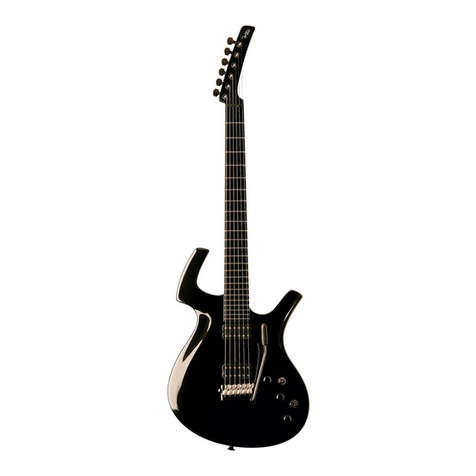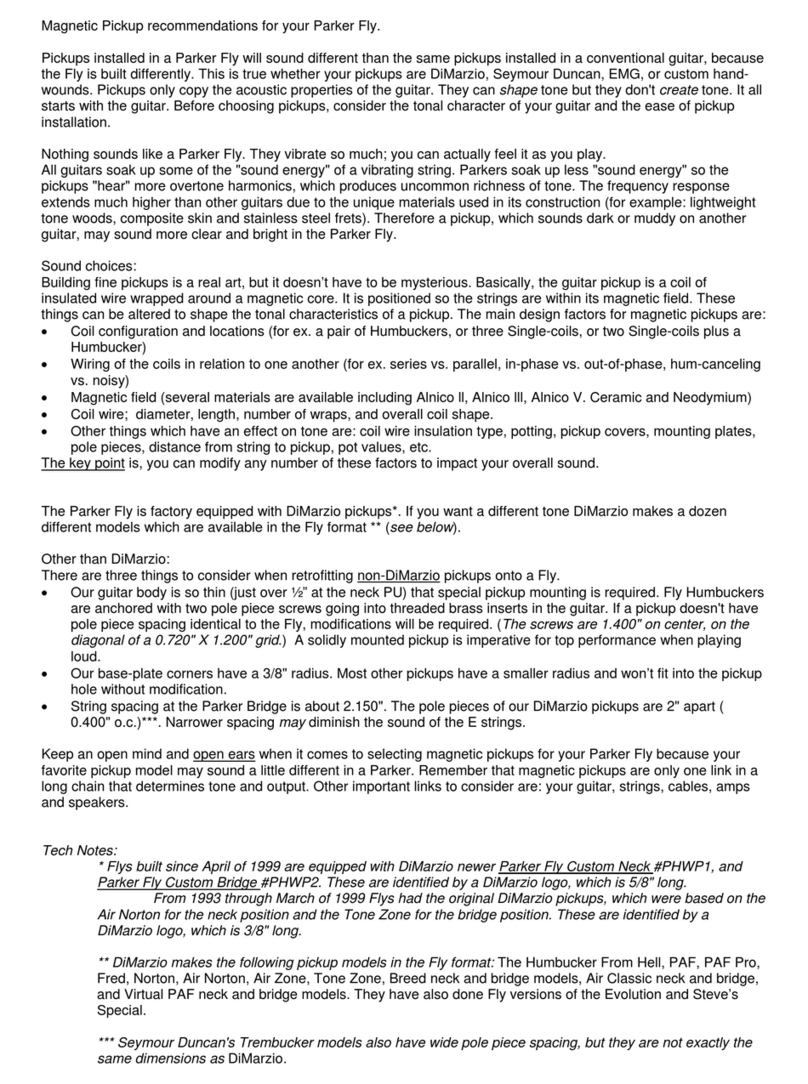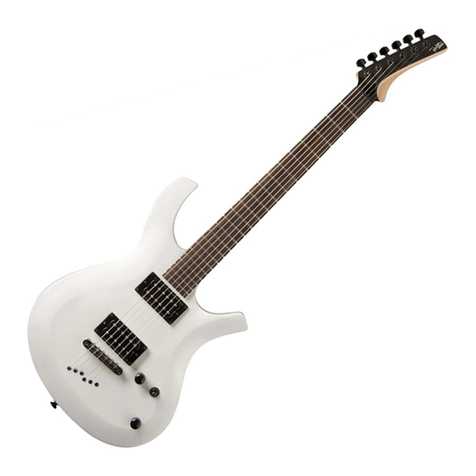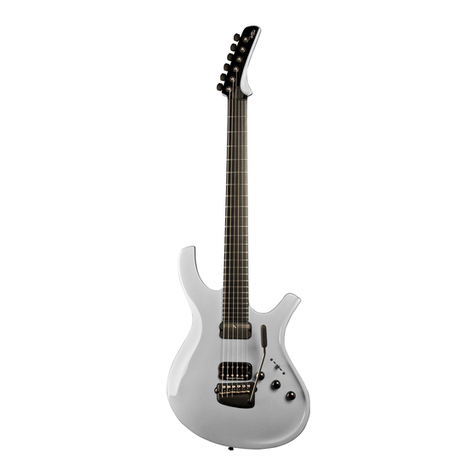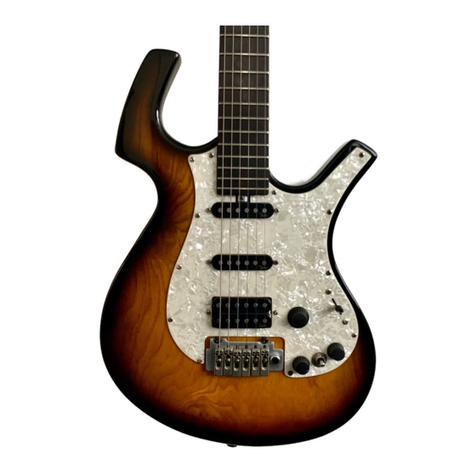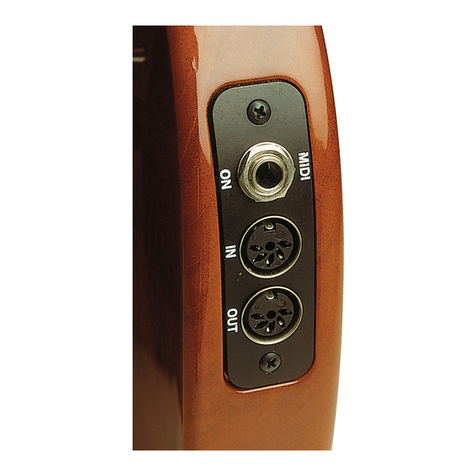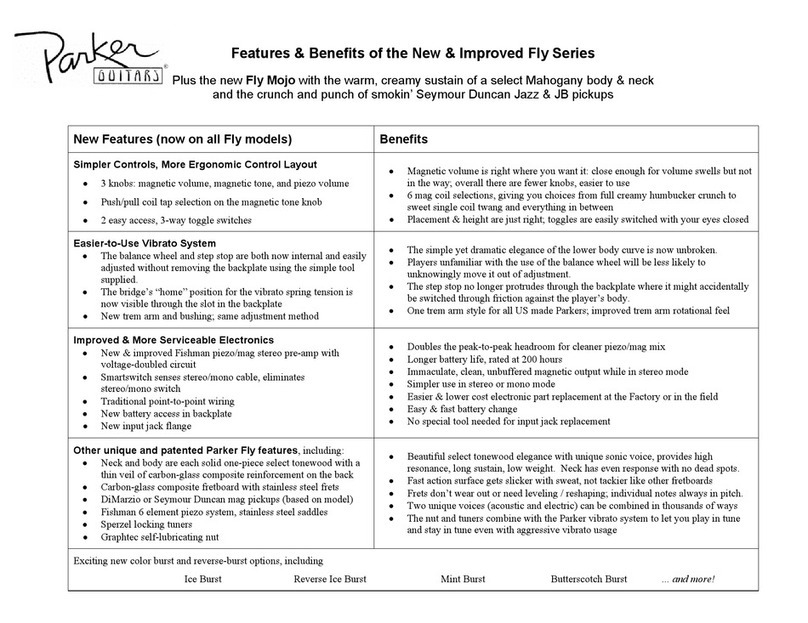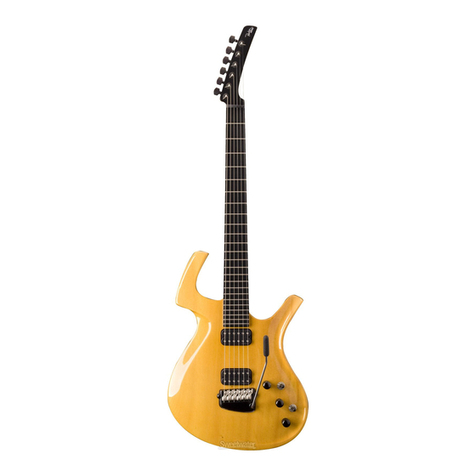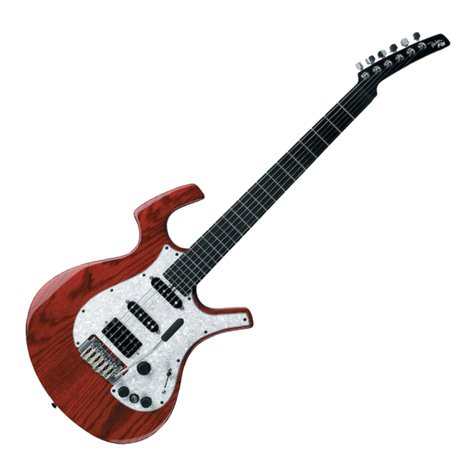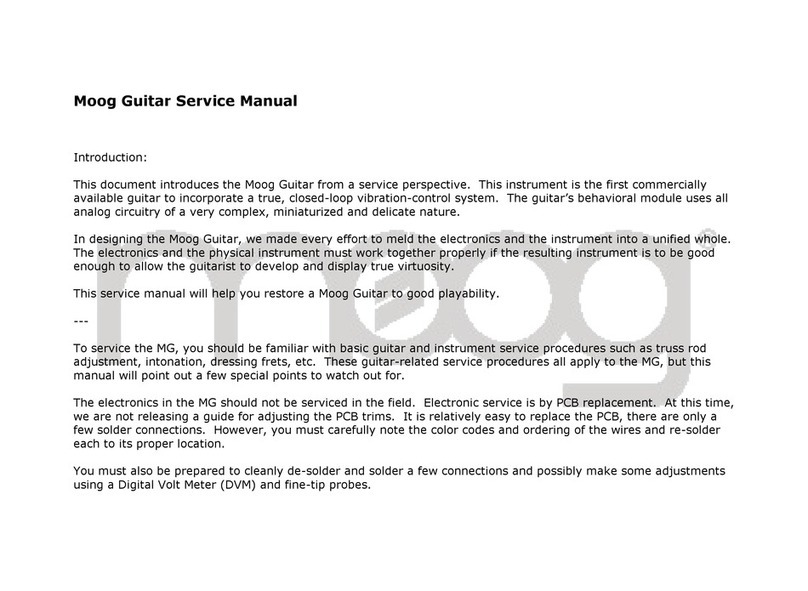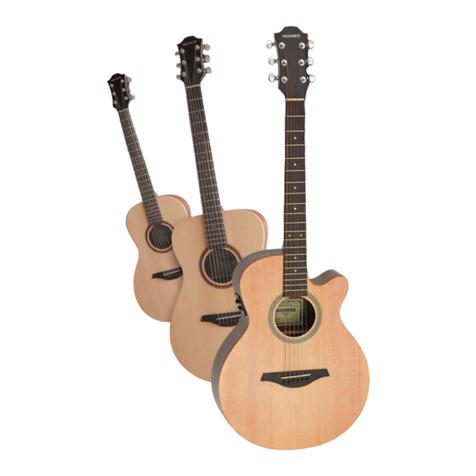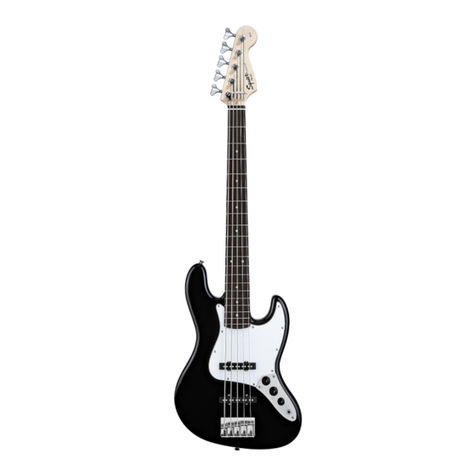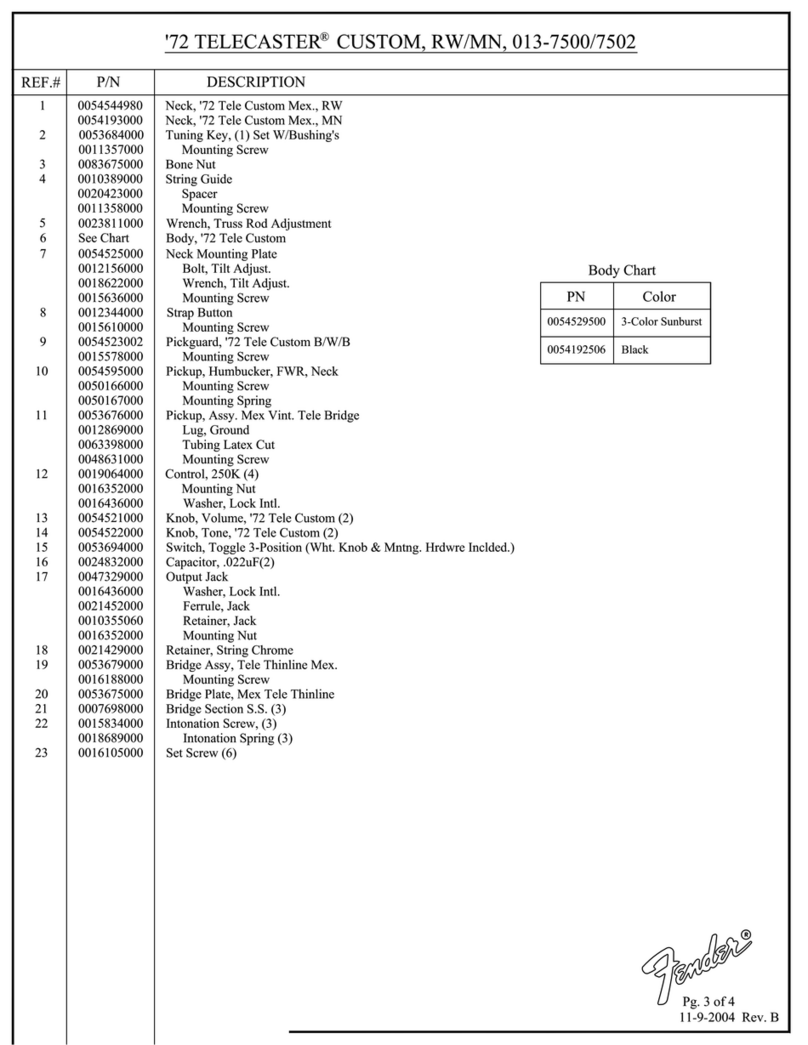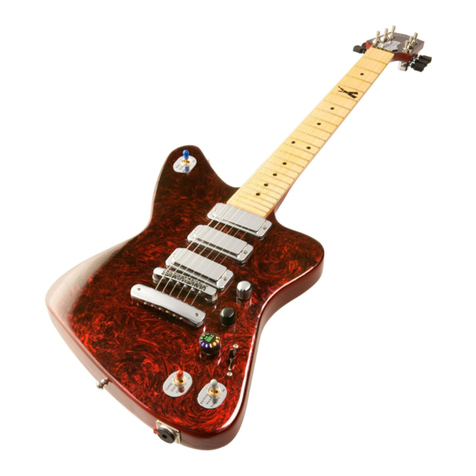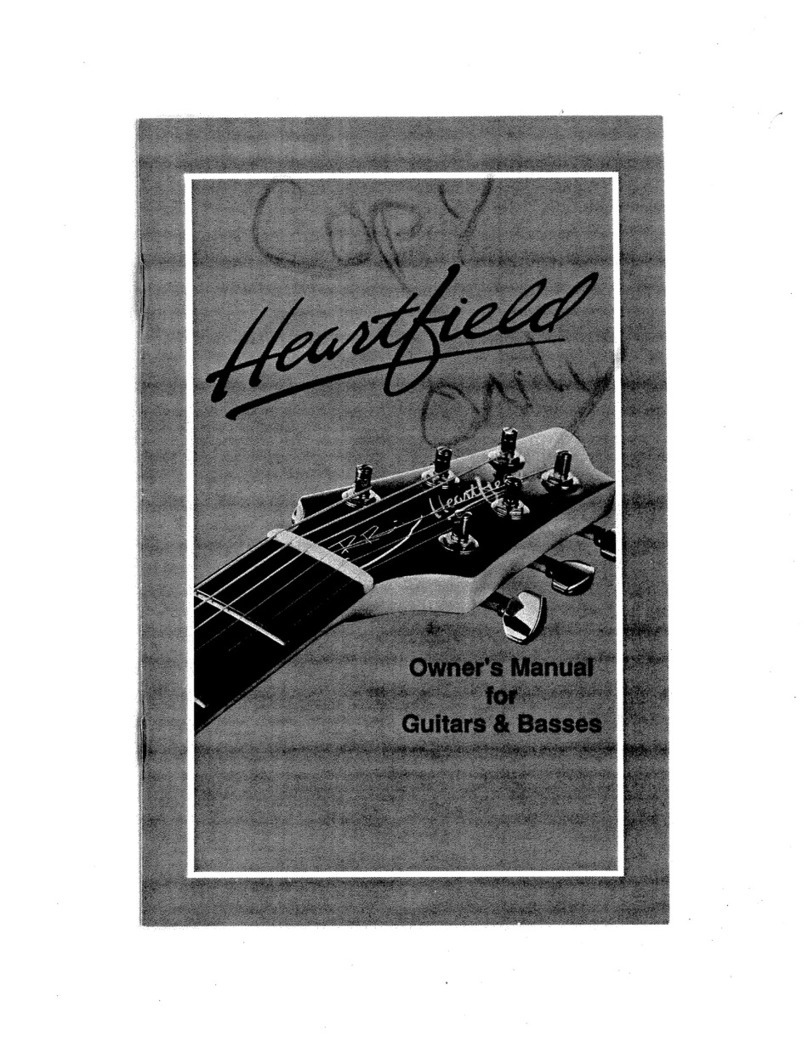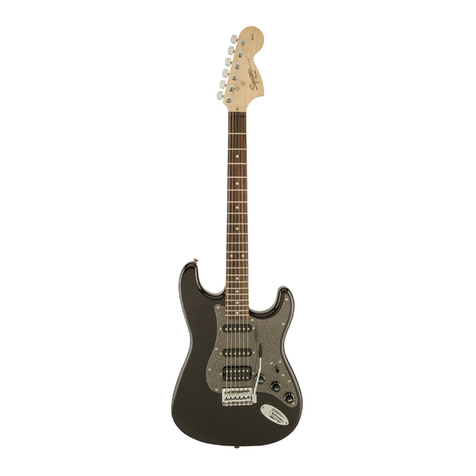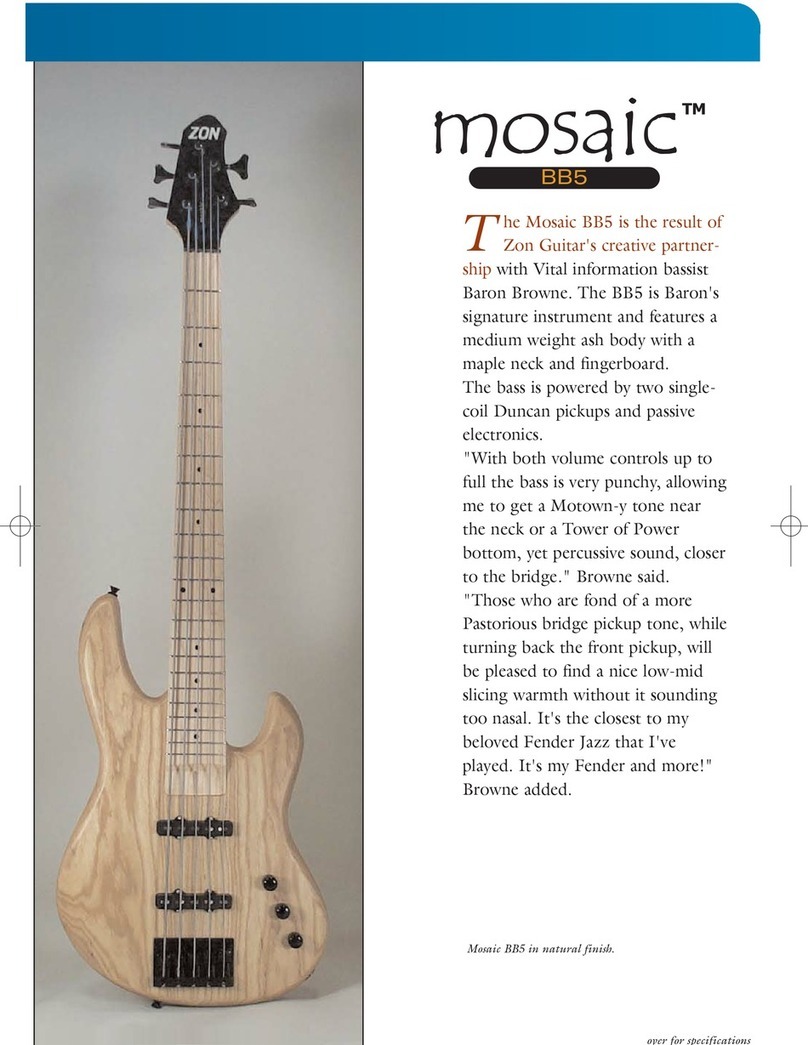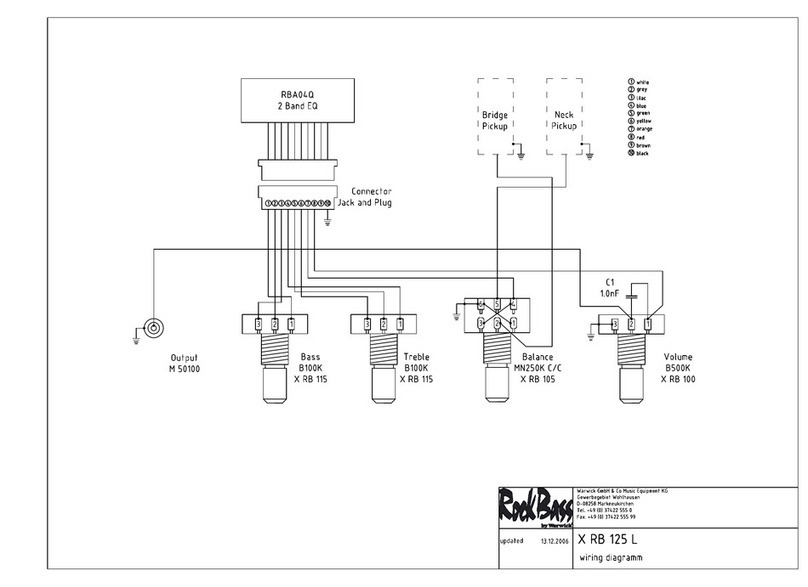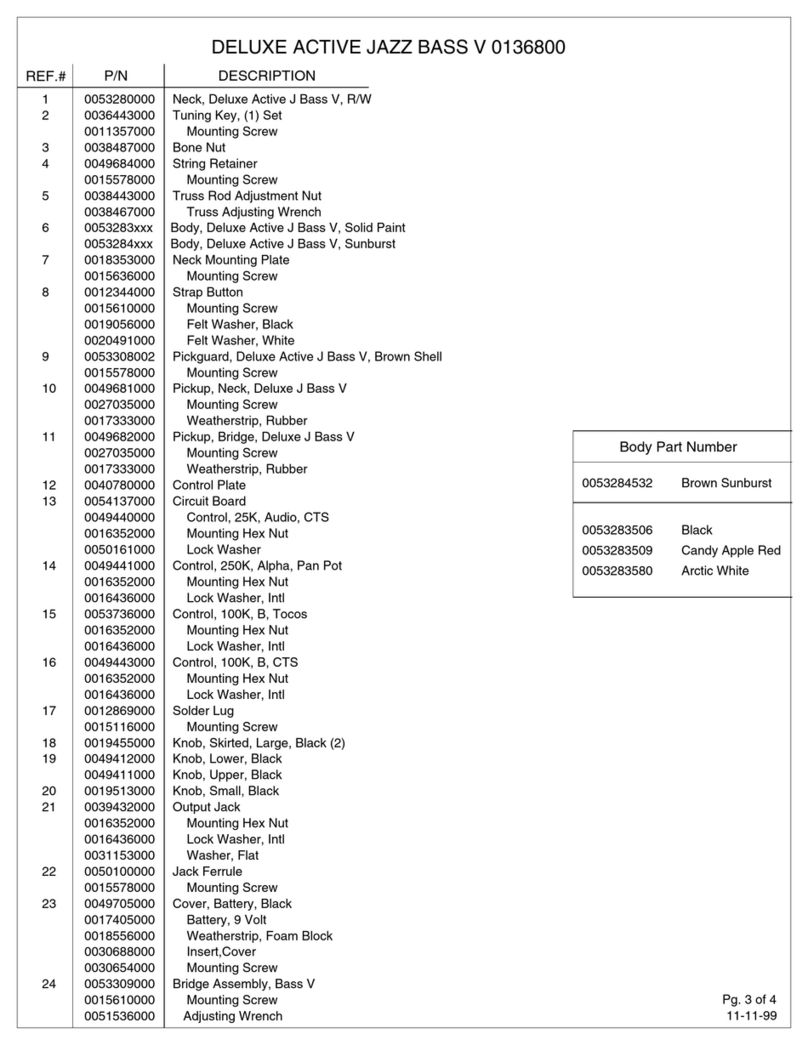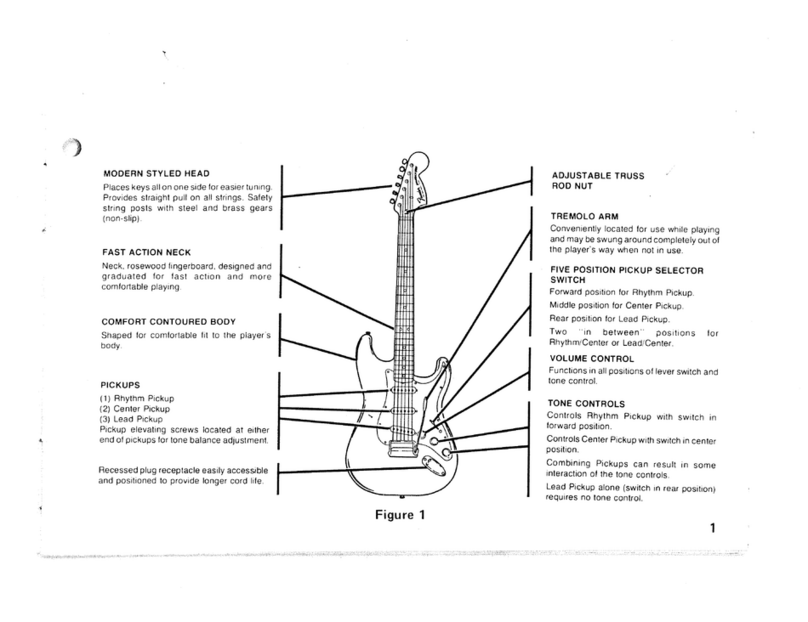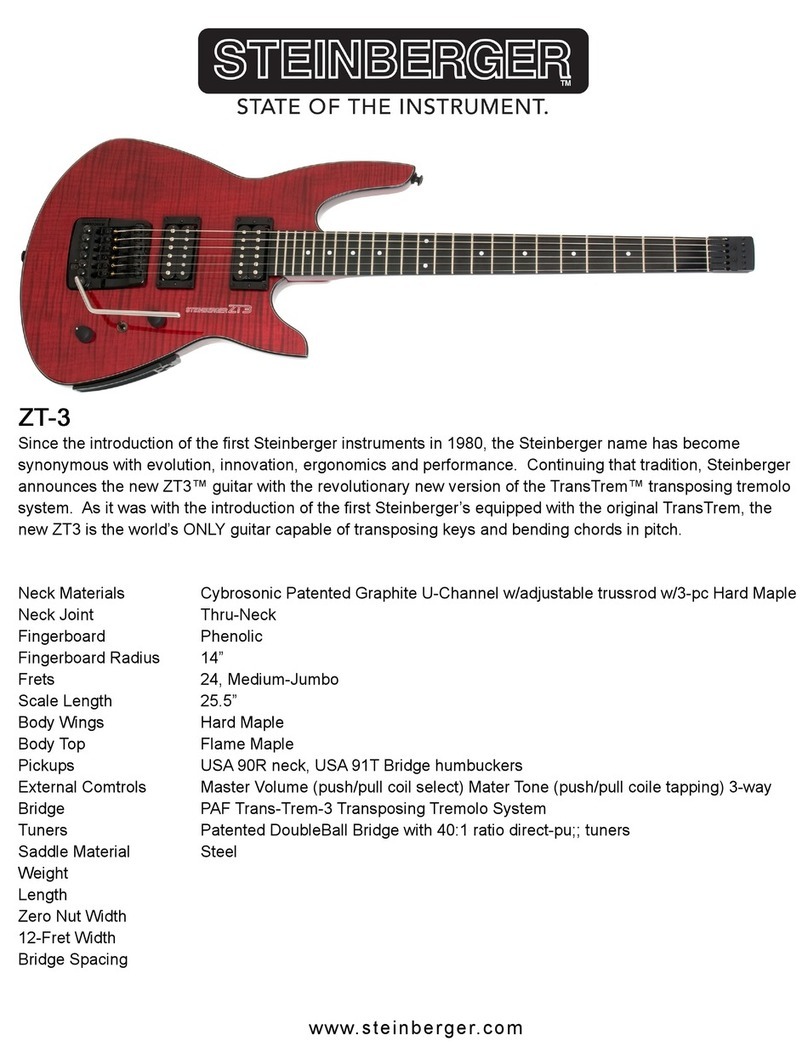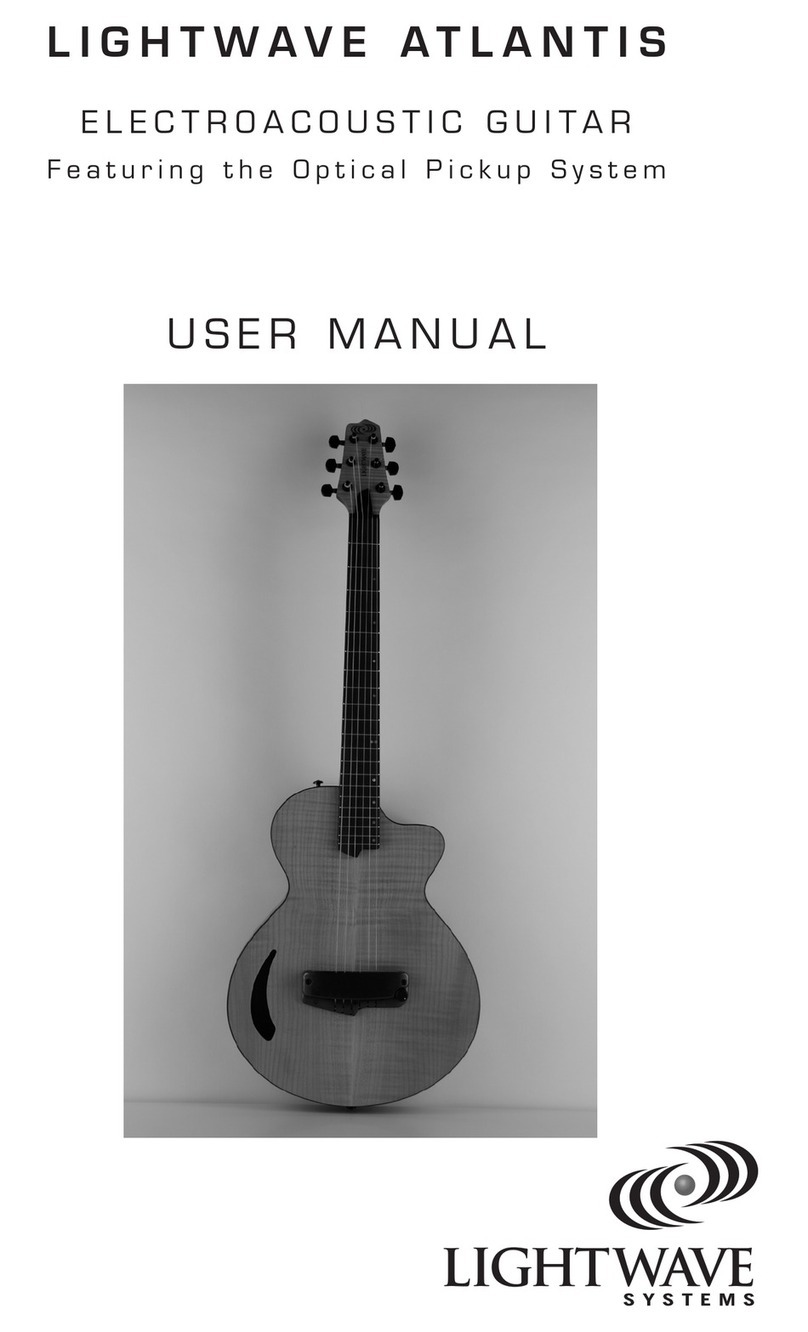EVOLUTION OF THE FLY
For forty-five years, guitar builders and technicians have re-combined the features
of available instruments in countless ways, trying to serve the changing needs of
guitarists. The uses and limitations of the new combinations have been fully
exploredbynow.Asdifferentastheyseem,solid-bodyandhollow-bodyguitarsboth
create sound the same way. Both guitars are mechanical devices made of
wood and othermaterials,designedtorespondtoastring’svibration.Theonlyreal
differenceisthemodeofamplification.Oneusespickups,circuitryandspeakers;the
other uses a wooden membrane to move the air.
The character of both acoustic and electric guitars is
determined by their materials and proportions.
Knowing this, we set out to create the most versatile, responsive, and dependable
instrument possible. In the end, what emerged was the unique instrument that you
now own. Our search has led us down many new paths in hopes of achieving a
harmonious balance between the magic soulfulness of wood, which can suffer from
problems such as warping and cracking, and more stable modern materials, which
typicallysoundcoldandclinical.Thinkofourlightweighttonewoodandexoskeleton
of high-modulus carbon and glass fiber as a new kind of wood. This patented
structure allows us to sculpt a beautiful, lightweight guitar, optimized for its ability
to respondto thestrings’ vibrations. We have developed other innovative features,
aswell.Ourpatentedstainlesssteelno-tangfretsbondedtoalaminatedfingerboard,
greatlyincreasefretlife.Thereisalsoanewlightweighttrussrodmadeoftool-steel,
and a flat spring vibrato system designed to work with the Fly’s built-in piezo-electric bridge
pickups.


